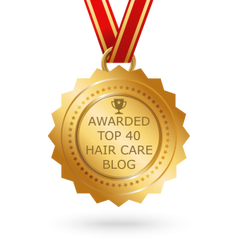
What if I told you that your hair is a lot like a plant?
Hear me out. What happens when you give a plant way too much water? It drowns.
Same thing happens to your hair. When you give your hair so much moisture it’s practically drowning in it, you make it weak and prone to breakage.
It’s a phenomenon called hygral fatigue.
What’s Hygral Fatigue?
Hygral fatigue is damage to the cuticles that happens whenever you use too much water.
Here’s the deal: when you wash your hair, your cuticles absorb so much water, they swell up. As your hair dries and moisture evaporates, your cuticles contract. Over time, this weakens hair and leads to breakage.
What Causes Hygral Fatigue?
Washing your hair a few times a week isn’t enough to cause hygral fatigue. Phew!
Problems start when the swelling and contracting gets out of hand. The main culprits for hygral fatigue are:
- Deep conditioning more often or longer than the instructions recommend
- Overnight conditioning (every single night)
- Rewetting hair each day without allowing it to dry completely
- Using moisturizing conditioners that don’t contain proteins
FYI, if you’ve got high porosity hair, you’re more at risk of hygral fatigue. That’s because your hair has open cuticles that absorb way too much moisture every time you wash your hair or use conditioner.
Low porosity hair fares better. Your hair has closed cuticles that don’t let water in and out as easily, making you less likely to get hygral fatigue.
How Do You Know If You Have Hygral Fatigue?
Having porous hair makes you more prone to hygral fatigue, but it’s not a given you have it. Here are a few more symptoms to look out for:
- Excessive breakage: if your hair is always breaking off or shedding like crazy, chances are hygral fatigue is weakening it.
- Lack of elasticity: if your hair stretches less than normal when wet and doesn’t return to its natural state after pulling, the balance of moisture and protein is off. Hello, hygral fatigue!
- Limp hair: hair affected by hygral fatigue feels limp and soggy when wet. It’s like it has no structure.
How To Avoid Hygral Fatigue
So, you have hygral fatigue? Don’t worry, you can fix it.
The trick to treat and prevent hygral fatigue is to keep the proper balance between moisture and protein.
Hair is made of protein (keratin, to be exact). When this protein structure is intact, your cuticles are closed and don’t absorb that much moisture to begin with. If you need help for damaged or weak hair, consider adding our Pure Protein to your beauty schedule. A bi-monthly use protein booster, it repairs and replaces lost or damaged protein to help maintain that healthy hair protein balance.
In other words, when your hair is healthy and has a low porosity, water won’t make it swell and contract like crazy all the time.
Here’s how you can restore the water and protein balance:
- Alternate between moisturizing and protein-based conditioners: moisturizing conditioners create a barrier on hair that prevents water loss while protein-based products repair and strengthen hair, making it less prone to hygral fatigue and swelling.
- Limit the amount of time your hair is soaked in water: keep your showers short, wear a cap in the swimming pool and don’t use deep conditioning treatments for longer than necessary. If your hair is healthy, deep conditioning overnight every once in a while is ok - just don’t do it every night!
- Pre-poo with argan oil: applying argan oil to your hair before shampooing creates a barrier that repels water, preventing your locks from absorbing too much and limiting hygral fatigue.
The Bottom Line
Remember, it’s all about balance. Keep your moisture and protein ratio healthy and you’ll never have to deal with hygral fatigue again.
